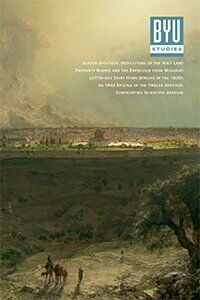Mapping Paradise
A History of Heaven on Earth
Book Notice
-
By
Jesse D. Hurlbut,
Mapping Paradise: A History of Heaven on Earth, by Alessandro Scafi (Chicago: University of Chicago Press, 2006)
Alessandro Scafi, who lectures at universities and museums in Bologna, Italy, and in London, England, draws upon his 1999 doctoral dissertation at the University of London for much of the content of this volume. In this thoroughly researched and beautifully illustrated book, Professor Scafi explores the cultural history of maps that attempt to represent the Garden of Eden as a location in space and time. He retraces the history of mapmaking from the very early Christian era through the modern period, with particular emphasis on medieval and early modern examples. Moreover, he clearly demonstrates how cultural attitudes about the function of maps have changed over time.
Most of the maps examined here made no attempts to display mathematically accurate relationships between landmarks and must be regarded as concept charts rather than as cartographic models of an objective geographic reality. This allowed early mapmakers to represent the known world as linked entities appearing in both space and time but also in a purely contemplative or allegorical arena. For instance, the mappa mundi displayed continents and bodies of water relative to each other and the four cardinal points (with east usually at the top). At the same time, the history of the world as it proceeded from Eden in the East toward Jerusalem, then to Rome in the West, was overlaid on the same map. In some cases, superposing the map onto the body of the crucified Christ allowed yet another layer of meaning for eschatological interpretations.
Scafi repeatedly points out that the question of whether the Garden of Eden should appear on a map at all stemmed from a problematic translation from the Hebrew Bible. The ambiguous word םָדֶקִּמ (miqedem) as a modifier of the name of paradise was translated in the Septuagint as “eastward” but in Jerome’s Vulgate as “from before the beginning.” Hence, the early interpreters of the Bible sought to represent Eden as both a place and a time.
In Mapping Paradise, the author also examines in detail the various theories over the centuries as to the location and accessibility of Eden. He mentions briefly the Jehovah’s Witnesses among the modern proponents of a literal Garden but makes reference to neither Joseph Smith nor Adam-ondi-Ahman. The unquestionable strength of the volume remains in the analysis of pre-Enlightenment representations of Eden in the world.
Notes
- Mormon Land Rights in Caldwell and Daviess Counties and the Mormon Conflict of 1838: New Findings and New Understandings
- In the Footsteps of Orson Hyde: Subsequent Dedications of the Holy Land
- What Hymns Early Mormons Sang and How They Sang Them
Articles
- An Epistle of the Twelve, March 1842
Documents
- Selling the Soul of Science for a Pot of Message: Evangelizing Atheism in The God Delusion
- The Current State of Primary Historical Sources Online
- Online Genealogical Research Resources
- Divine Truth or Human Tradition?: A Reconsideration of the Roman Catholic-Protestant Doctrine of the Trinity in Light of the Hebrew and Christian Scriptures
- A House for the Most High: The Story of the Original Nauvoo Temple
- The God of Old: Inside the Lost World of the Bible
- The Forging of Races: Race and Scripture in the Protestant Atlantic World, 1600–2000
- The Conversion of Jeff Williams
- Sacred Sound: Experiencing Music in World Religions
Reviews
- American Women Modernists: The Legacy of Robert Henri, 1910–1945
- Mapping Paradise: A History of Heaven on Earth
Book Notices
Purchase this Issue
Share This Article With Someone
Share This Article With Someone


